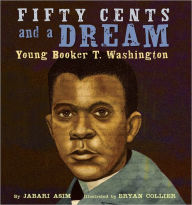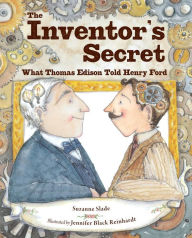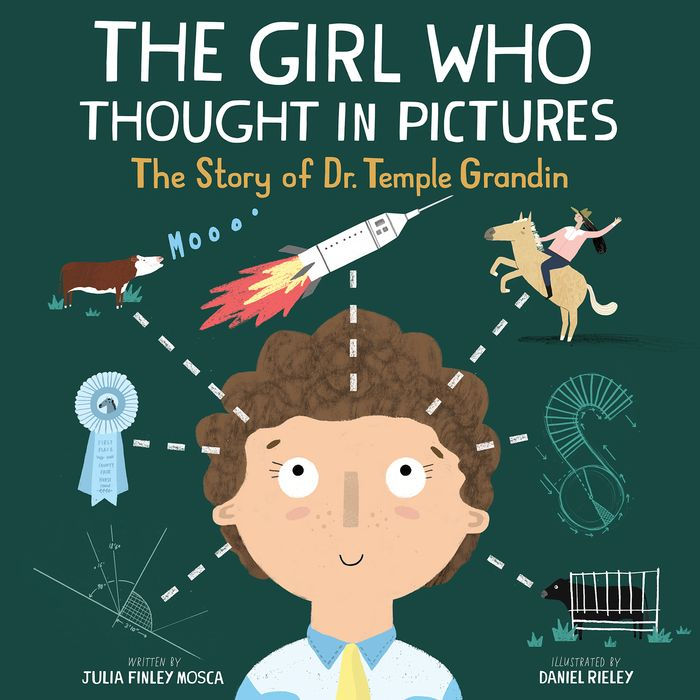As a young boy in medieval Italy, Leonardo Fibonacci thought about numbers day and night. He was such a daydreamer that people called him a blockhead.
When Leonardo grew up and traveled the world, he was inspired by the numbers used in different countries. Then he realized that many things in nature, from the number of petals on a flower to the spiral of a nautilus shell, seem to follow a certain pattern. The boy who was once teased for being a blockhead had discovered what came to be known as the Fibonacci Sequence!
Blockhead is a 2011 Bank Street - Best Children's Book of the Year.
Publishers Weekly
Math lover or not, readers should succumb to the charms of this highly entertaining biography of medieval mathematician Leonardo Fibonacci. “You can call me Blockhead. Everyone else does,” opens the lighthearted narrative. As an adult, he works out a math problem that involves reproducing rabbits and discovers a pattern that repeats itself in nature, which becomes the sequence of numbers that now bears his name. Hence, his obsession is vindicated: “All my life people had called me Blockhead because I daydreamed about numbers. But how could that be bad? Mother Nature loved numbers too!” D'Agnese's colloquial tone (King Frederick II calls Fibonacci a “smart cookie”) lures readers into the story and even invites them to ferret out patterns in the illustrations. Atop dappled backgrounds, O'Brien's delicate swirls and hatch marks echo the mathematical patterns—another graceful connection between math and the real world in which children live. Ages 6-9. (Apr.)
From the Publisher
"Charming and accessible..."—The New York Times Book Review
* "The lively text includes touches of humor; Emperor Frederick called him 'one smart cookie.’ O’Brien’s signature illustrations textured with thin lines re-create a medieval setting."—Kirkus Reviews, starred review
"Math lover or not, readers should succumb to the charms of this highly entertaining biography of medieval mathematician Leonardo Fibonacci."—Publishers Weekly
"D’Agnese’s introduction to medieval Europe’s greatest mathematician offers both a coherent biographical account—spun, with some invented details, from very sketchy historical records—and the clearest explanation to date for younger readers of the numerical sequence that is found throughout nature and still bears his name."—Booklist
"This lighthearted introduction to Fibonacci’s ideas will inspire young math lovers and perhaps point them toward more scholarly explorations."—School Library Journal
"[An] engaging, kid-friendly look at Fibonacci and his eponymous numerical sequence... The book has some clever tongue-in-cheek humor, and D’Agnese does readers a favor by clearly explaining Fibonacci’s breeding rabbits scenario... Throughout the book, O’Brien’s illustrations are textured with swirls and spirals—a whimsical homage to the man who discovered, as he believed, 'the numbers Mother Nature uses to order the universe.'"—Horn Book
"Young listeners should get the gist of Fibonacci’s work, and they can test their skills at identifying numbers in the Fibonacci sequence by looking for examples tucked throughout the artwork."—Bulletin of the Center for Children’s Books
Children's Literature - Ken Marantz and Sylvia Marantz
Leonardo Fibonacci tells his own story here, beginning with his love of and amazing ability to manage numbers. His constant daydreaming in 12th century Pisa, however, earns him the nickname, "Blockhead." His angry father is determined to make him a merchant. He takes him to northern Africa. There Leonardo, the lover of numbers, discovers the efficiency of the number system of the Arab merchants as opposed to Roman numerals. As he travels on business, he seeks wisdom, learning fractions and geometry. He sets mathematical problems along with a method of solution. With wry humor, Leonardo tells how he solves problems set to him by the Holy Roman Emperor, Frederick II. Back in Pisa, however, he is still considered a blockhead. Despite this, he goes on to uncover "the numbers Mother Nature uses to order the universe," what we now call the Fibonacci Sequence. O'Brien's swirling style of drawing using fine lines to build shapes seems well suited to this story with the spiral as a major factor. Busy scenes in a variety of sizes and arrangements offer cityscapes, sailing ships, and crowd scenes dressed in the fashion of the times along with diagrams of his discovery. Notes offer the facts known about his life, along with a challenge to find examples of Fibonacci numbers in the illustrations. Reviewer: Ken Marantz and Sylvia Marantz
School Library Journal
Gr 2–5—In this presentation of Joseph D'Agnese's book (Holt, 2010), viewers learn about medieval math genius Leonardo Fibonacci. While there really isn't much original source material on Fibonacci, the author weaves what is known into a first-person narrative about a boy who loves math and sees mathematical patterns in nature. John O'Brien's detailed, medieval-flavored illustrations are scanned as Kirby Ward provides the narration. The illustrations are quite clever as canny viewers will notice patterns and swirls that reflect some of Fibonacci's discoveries. Students will learn about the switch from Roman to Arabic numerals, as well as a way to view the Fibonacci sequence using rabbits. Background music reflects the changing locations in the book. An introduction by the author provides useful additional information. This interesting salute to a legendary mathematician might inspire students.—Teresa Bateman. Brigadoon Elementary School, Federal Way, WA
Julie Just
…charming and accessible…
—The New York Times
Kirkus Reviews
"You can call me Blockhead, everyone else does." So Leonardo Fibonacci declares in first-person voice in the opening of this picture-book biography. Who was he? Fascinated with numbers as a child, Leonardo grew from a daydreaming boy in medieval Italy to become one of the greatest European mathematicians of the Middle Ages. He found something to count everywhere, but his father wanted him to be a merchant and took him to North Africa to do his accounts. Leonardo learned fractions from the Egyptians, geometry in Greece and Hindu-Arabic numerals from India. He wrote a book that posed his mystifying, multiplying rabbit question. The lively text includes touches of humor; Emperor Frederick called him "one smart cookie." O'Brien's signature illustrations textured with thin lines re-create a medieval setting. The last page lists things to find in the pictures, like a three-leafed clover and spirals, as well as activities that reinforce his concepts. Few people will know this man's name, but the book will be a boon to math teachers, homeschoolers and others piqued by the title. (Picture book/biography. 6-10)
Read More

















